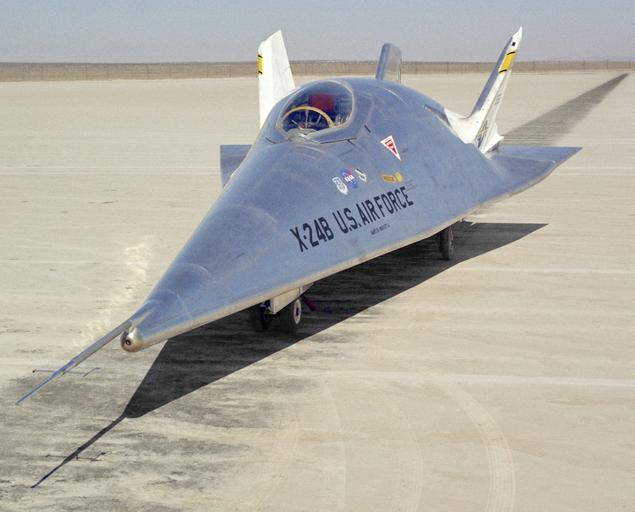MAKE A MEME
View Large Image

| View Original: | Martin_Marietta_X-24B.jpg (2400x1935) | |||
| Download: | Original | Medium | Small | Thumb |
| Courtesy of: | www.flickr.com | More Like This | ||
| Keywords: martin marietta x-24b x24b research aircraft nasa usaf lifting body liftingbody outdoor The X-24 was one of a group of lifting bodies flown by the NASA Flight Research Center (now Dryden Flight Research Center) in a joint program with the U.S. Air Force at Edwards Air Force Base in California from 1963 to 1975. The lifting bodies were used to demonstrate the ability of pilots to maneuver and safely land wingless vehicles designed to fly back to Earth from space and be landed like an airplane at a predetermined site. The X-24B's design evolved from a family of potential reentry shapes, each with higher lift-to-drag ratios, proposed by the Air Force Flight Dynamics Laboratory. To reduce the costs of constructing a research vehicle, the Air Force returned the X-24A to the Martin Marietta Corporation (as Martin Aircraft Company became after a merger) for modifications that converted its bulbous shape into one resembling a "flying flatiron" -- rounded top, flat bottom, and a double delta planform that ended in a pointed nose. First to fly the X-24B was John Manke, a glide flight on 1 August 1973. He was also the pilot on the first powered mission 15 November 1973. Photo replaced on 19 Sep 2016 with a larger version. The X-24 was one of a group of lifting bodies flown by the NASA Flight Research Center (now Dryden Flight Research Center) in a joint program with the U.S. Air Force at Edwards Air Force Base in California from 1963 to 1975. The lifting bodies were used to demonstrate the ability of pilots to maneuver and safely land wingless vehicles designed to fly back to Earth from space and be landed like an airplane at a predetermined site. The X-24B's design evolved from a family of potential reentry shapes, each with higher lift-to-drag ratios, proposed by the Air Force Flight Dynamics Laboratory. To reduce the costs of constructing a research vehicle, the Air Force returned the X-24A to the Martin Marietta Corporation (as Martin Aircraft Company became after a merger) for modifications that converted its bulbous shape into one resembling a "flying flatiron" -- rounded top, flat bottom, and a double delta planform that ended in a pointed nose. First to fly the X-24B was John Manke, a glide flight on 1 August 1973. He was also the pilot on the first powered mission 15 November 1973. Photo replaced on 19 Sep 2016 with a larger version. | ||||